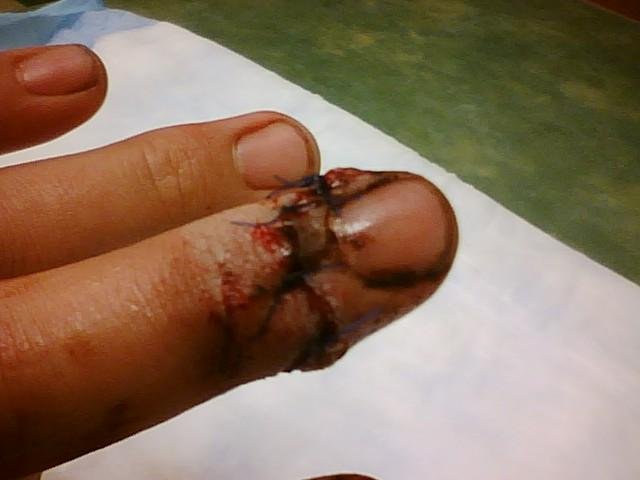Near-amputated distal tip of left middle finger, with severed nerve, attached only by partial skin connection, shown after stitching. (CC/Buickid)
Biologists at New York University have discovered the nail stem cells that allow us to regrow our fingertips, and they could help us regrow whole limbs in the future.
Humans and other mammals have retained the amphibian ability to regenerate a lost fingertip -- a poorly understood phenomenon until now.
When a child cuts off a fingertip, it can sprout back in as little as a couple of months -- skin, bone, nail and even nerves -- but only if its amputated before the edge of the nail.
For decades, doctors have reported such cases, and not just in children, but in mice. Even elderly rodents are capable of regenerating a paw as long as some of the nail bed remains.
"Everyone knows that fingernails keep growing, but no one really knows why," said Mayumi Ito, assistant professor of dermatology and lead author of the study. Ito and her team searched the cuticle bed for the stem cells that allow this regeneration to occur.
They discovered a population of self-renewing stem cells in the nail matrix, a part of the nail bed rich in nerve endings and blood vessels that stimulate nail growth.
In order to regenerate bone in the fingertip, the stem cells depend upon the same family of proteins responsible for growing certain organs and limbs during fetal development, and maintaining hair and tissue regeneration -- the Wnt signaling network.
"When we blocked the Wnt-signaling pathway in mice with amputated fingertips, the nail and bone did not grow back as they normally would," said Dr. Ito.
Researchers also found they could stimulate bone and tissue regeneration when an amputation occurred just beyond the nail bed, by manipulating the Wnt pathway.
"Amputations of this magnitude ordinarily do not grow back," says Dr. Ito.
The findings, published in today in the journal Nature, suggest that Wnt signaling is essential for fingertip regeneration. An estimated 1.7 million people in the U.S. live with amputations, and further research could lead to new therapies to help people regenerate lost limbs.















